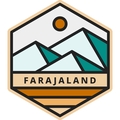Application settings
The following application settings have been used in the Farajaland OpenCRVS configuration to support the country context.
Name of application
Farajaland CRS
Government logo

Currency
United States dollar
Phone number
^0(7|9)[0-9]{8}$
This RegEx represents a 10 figure number starting with 07 or 09
Unique Identification Number (UIN) e.g. National ID
^[0-9]{9}$
This RegEx represents a 9 digit number
Legally specified time period for birth registration
Within 30 days
Late registration of birth
Between 30 days and 365 days
Delayed registration of birth
After 365 days
Fees for on-time registration of birth
$ 0
Fees for late registration of birth
$ 5.50
Requesting fees for birth registration is not advised, however it is possible in the system.
Fees for delayed registration of birth
$ 15.00
Requesting fees for birth registration is not advised, however it is possible in the system.
Legally specified time period for death registration
Within 45 days
Delayed registration of death
After 45 days
Fees for on-time registration of birth
$ 0
Fees for delayed registration of birth
$ 15.00
Requesting fees for birth registration is not advised, however it is possible in the system.